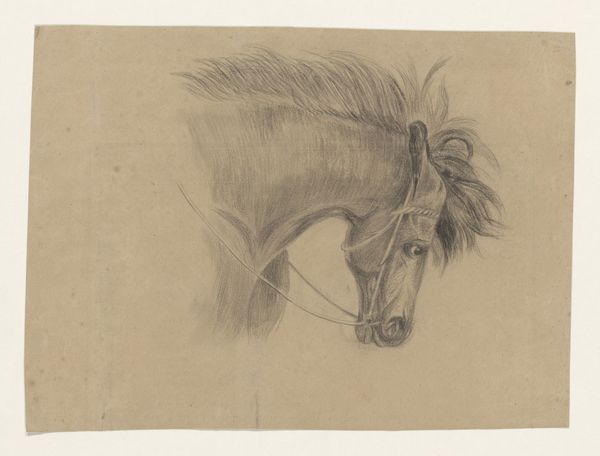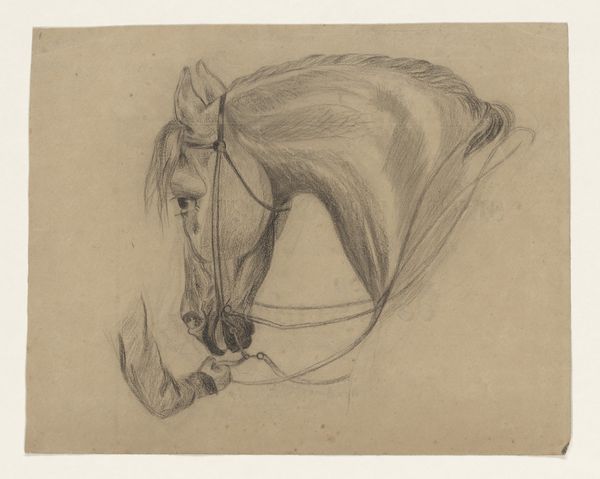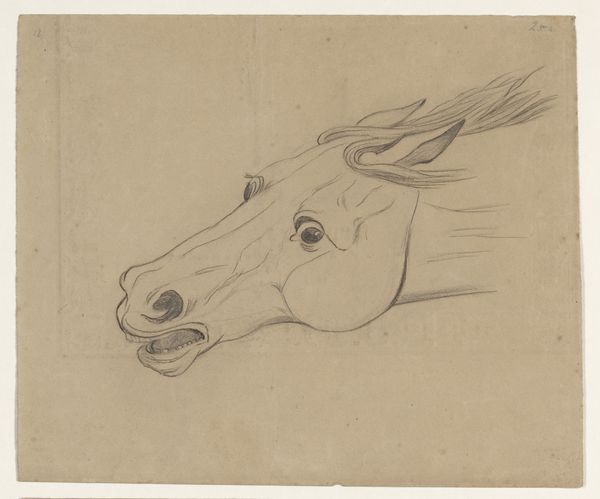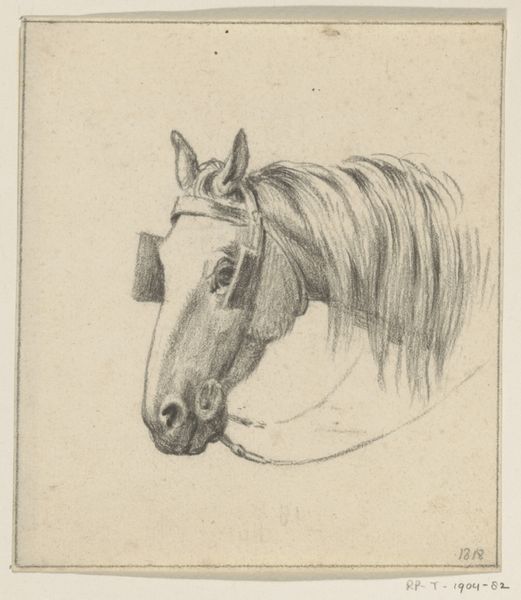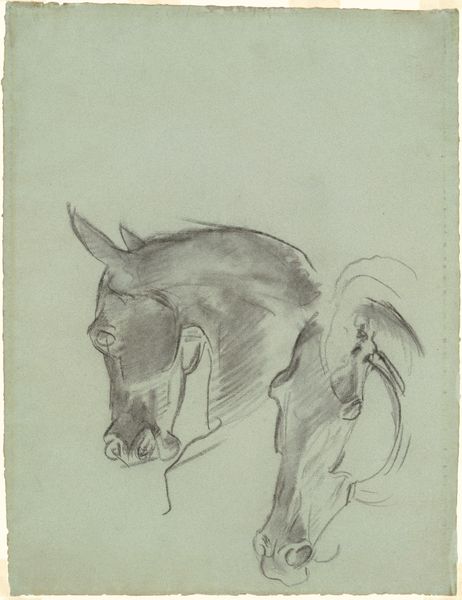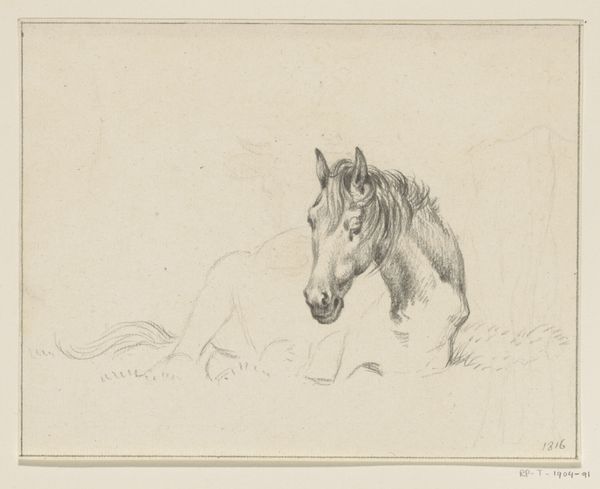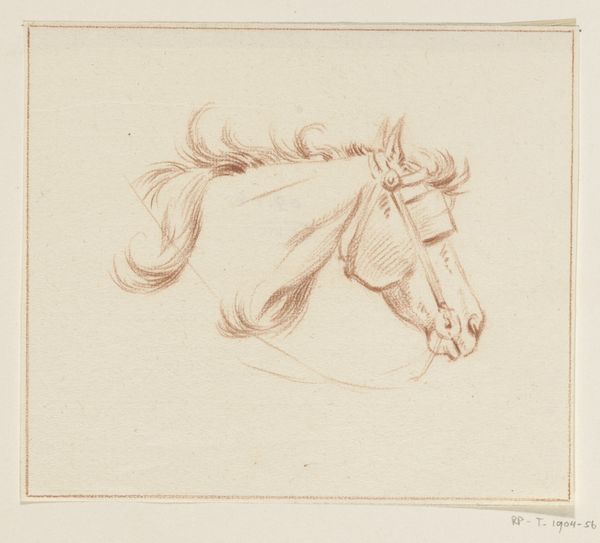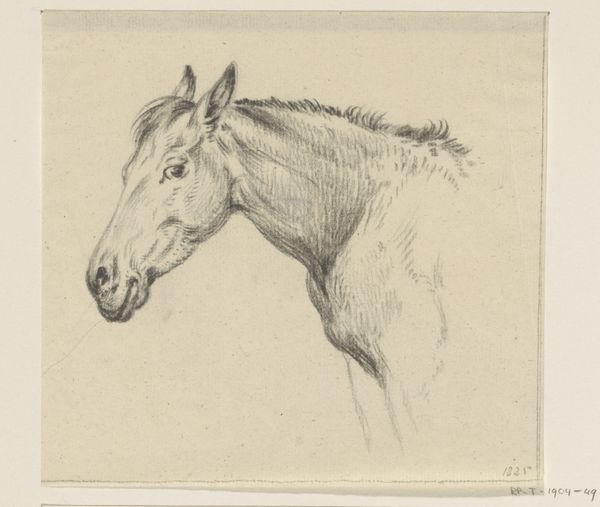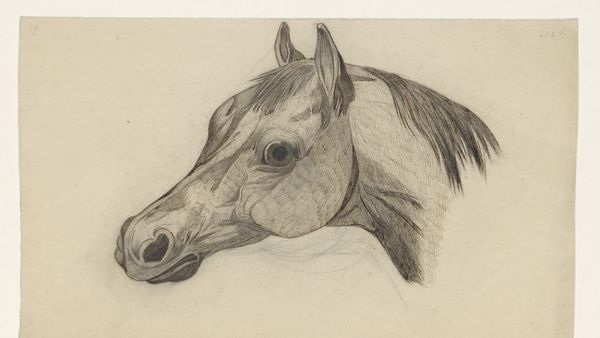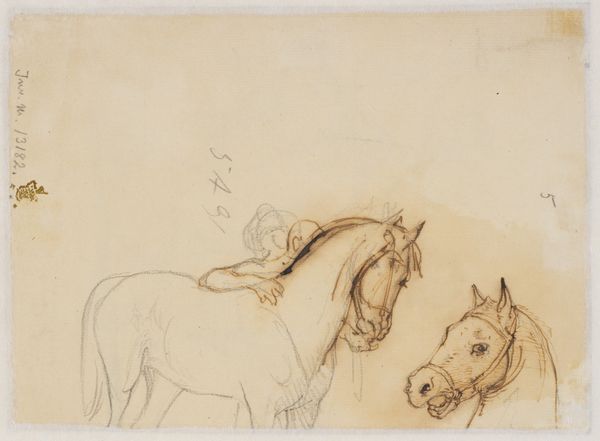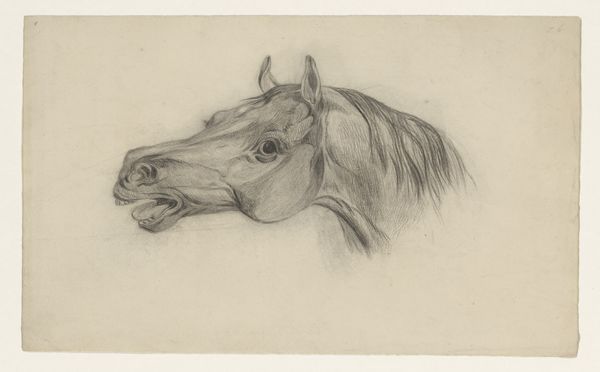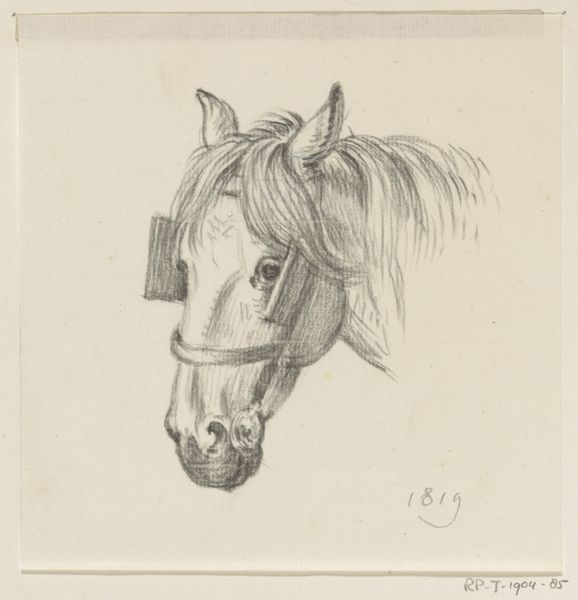
drawing, pencil
#
portrait
#
pencil drawn
#
drawing
#
animal
#
pencil sketch
#
pencil drawing
#
pencil
#
horse
#
line
#
sketchbook drawing
#
pencil work
Dimensions: height 180 mm, width 207 mm
Copyright: Rijks Museum: Open Domain
Editor: Here we have "Head of a Horse, facing left," a pencil drawing by Johannes Tavenraat, made sometime between 1819 and 1881. I'm struck by its simplicity and elegance, a certain quiet dignity in the horse’s gaze. What can you tell me about this work? Curator: It’s interesting that you use the word "dignity." How might that concept relate to 19th-century Dutch society and its relationship to animals, particularly horses? They were, after all, central to both agriculture and military power. Editor: I suppose the horse might represent a sort of noble service, a hardworking creature central to the era’s economy and defense? Curator: Exactly! And that inherently involves considering class and power dynamics. Think about the relationship between humans and animals within the context of labor. How does representing a horse in this way—a “portrait,” as the museum calls it— elevate or perhaps even subtly critique its position? Who owned or commissioned a drawing like this, and what does it reveal about their social standing? Editor: That's fascinating. So you're saying even a seemingly straightforward drawing like this opens up questions about societal hierarchies and the roles animals played within them? Curator: Absolutely. Art always reflects and refracts the power structures of its time. This drawing isn’t just about a horse; it's about our relationship with the natural world, labor, and the lens through which we assign value and status. What does it mean to portray a working animal in this light, and who benefits from that portrayal? Editor: That gives me so much to think about. I will never look at an animal portrait the same way. Curator: Precisely. Questioning the relationship of art to broader cultural, social, and historical forces can deeply enrich our experience.
Comments
No comments
Be the first to comment and join the conversation on the ultimate creative platform.
